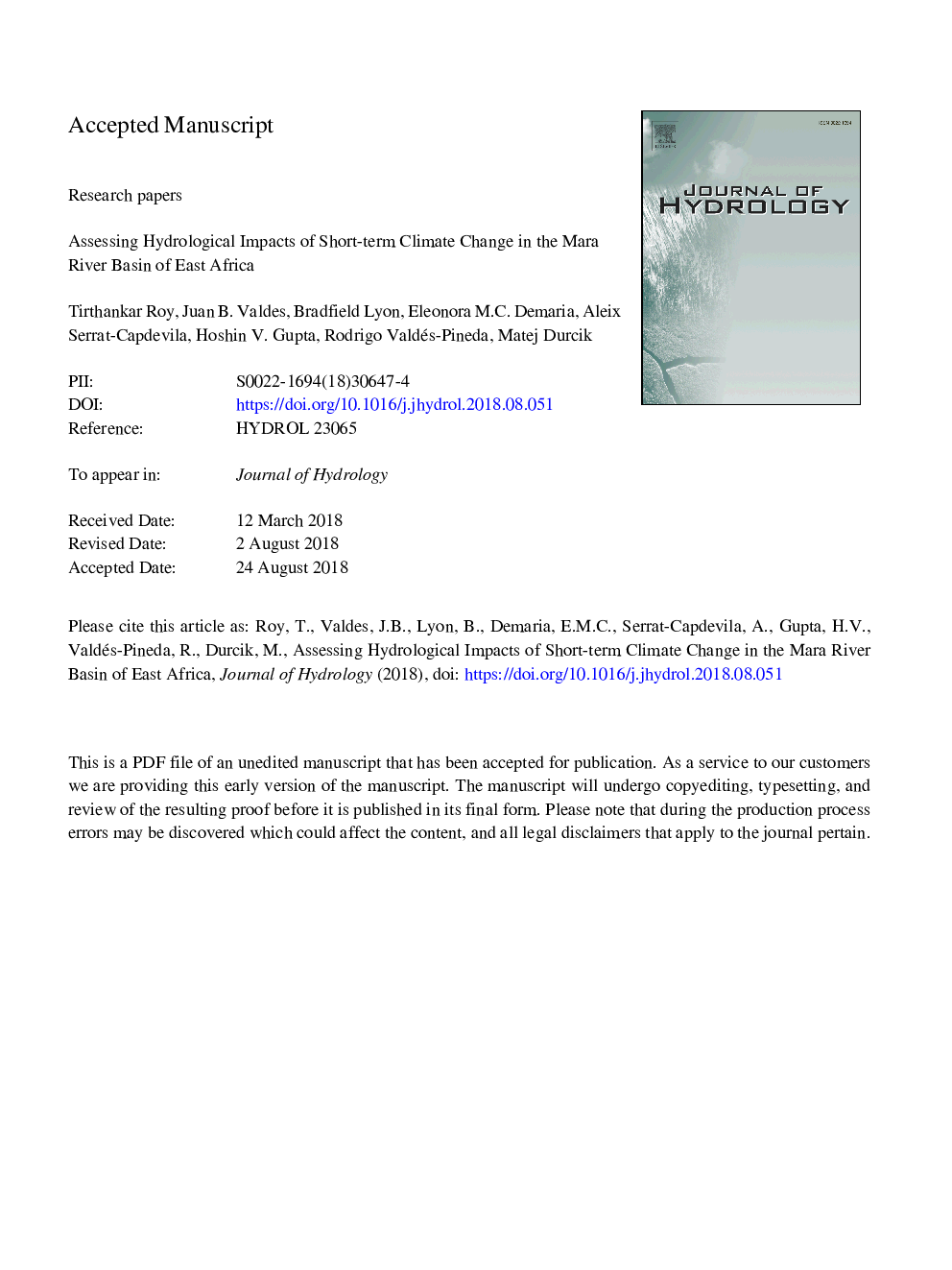| Article ID | Journal | Published Year | Pages | File Type |
|---|---|---|---|---|
| 11024773 | Journal of Hydrology | 2018 | 45 Pages |
Abstract
We assess the impacts of a range of short-term climate change scenarios (2020-2050) on the hydrology of the Mara River Basin in East Africa using a new high-resolution (0.25°) daily climate dataset. The scenarios combine natural climate variability, as captured by a vector autoregressive (VAR) model, with a range of climate trends calculated from 31 models in the Coupled Model Intercomparison Project Phase 5 (CMIP5). The methodology translates these climate scenarios into plausible daily sequences of climate variables utilizing the Agricultural Modern-Era Retrospective Analysis for Research and Applications (AgMERRA) dataset. The new dataset (VARAG) has several advantages over traditional general circulation model outputs, such as, the statistical representation of short-term natural climate variability, availability at a daily time scale and high spatial resolution, not requiring additional downscaling, and the use of the AgMERRA data which is bias-corrected extensively. To assess the associated impacts on basin hydrology, the semi-distributed Variable Infiltration Capacity (VIC) land-surface model is forced with the climate scenarios, after being calibrated for the study area using the fine-resolution (0.05°) merged satellite and in-situ observation-based dataset, Climate Hazards Group InfraRed Precipitation with Station data (CHIRPS). The climate data are further bias-corrected by applying a non-parametric quantile mapping scheme, where the cumulative distribution functions are approximated using kernel densities. Three different wetness scenarios (dry, average, and wet) are analyzed to see the potential short-term changes in the basin. We find that the precipitation bias correction is more in effect in the mountainous sub-basins, one of which also shows the maximum difference between the wet and dry scenario streamflows. Precipitation, evapotranspiration, and soil moisture show increasing trends mostly during the primary rainy season, while no trend is found in the corresponding streamflows. The annual values of these variables also do not change much in the coming three decades. The methodology implemented in this study provides a reliable range of possibilities which can greatly benefit risk analysis and infrastructure designing, and shows potential to be applied to other basins.
Related Topics
Physical Sciences and Engineering
Earth and Planetary Sciences
Earth-Surface Processes
Authors
Tirthankar Roy, Juan B. Valdés, Bradfield Lyon, Eleonora M.C. Demaria, Aleix Serrat-Capdevila, Hoshin V. Gupta, Rodrigo Valdés-Pineda, Matej Durcik,
